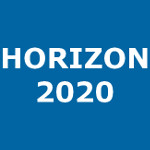Valorization of onion waste by obtaining extracts rich in phenolic compounds and feasibility of its therapeutic use on colon cancer
Paesa, M. (Universidad de Zaragoza) ; Nogueira, D. P. ; Velderrain-Rodríguez, G. ; Esparza, I. ; Jiménez-Moreno, N. ; Mendoza, G. ; Osada, J. (Universidad de Zaragoza) ; Martin-Belloso, O. ; Rodríguez-Yoldi, M. J. (Universidad de Zaragoza) ; Ancín-Azpilicueta, C.
Resumen: In this study, the total phenolic content, the antioxidant and antiproliferative activities of onion waste extracts were characterized. Some phenolic compounds present in the extracts were also identified and quantified by HPLC-DAD. Additionally, an in-silico analysis was performed to identify the phenolic compounds with the highest intestinal absorption and Caco-2 permeability. The onion extract possessed a high amount of phenolic compounds (177 ± 9 mg/g extract) and had an effective antioxidant capacity measured by ABTS, FRAP and DPPH assays. Regarding the antiproliferative activity, the onion extracts produced cell cycle arrest in the S phase with p53 activation, intrinsic apoptosis (mitochondrial membrane potential modification) and caspase 3 activation. Likewise, onion waste increased intracellular ROS with possible NF-kB activation causing a proteasome down regulation. In addition, the extracts protected the intestine against oxidative stress induced by H2O2 . According to the in-silico analysis, these results could be related to the higher Caco-2 permeability to protocatechuic acid. Therefore, this study provides new insights regarding the potential use of these types of extract as functional ingredients with antioxidant and antiproliferative properties and as medicinal agents in diseases related to oxidative stress, such as cancer. In addition, its valorization would contribute to the circular economy. © 2022 by the authors. Licensee MDPI, Basel, Switzerland.
Idioma: Inglés
DOI: 10.3390/antiox11040733
Año: 2022
Publicado en: Antioxidants 11, 4 (2022), 733 [18 pp]
ISSN: 2076-3921
Factor impacto JCR: 7.0 (2022)
Categ. JCR: BIOCHEMISTRY & MOLECULAR BIOLOGY rank: 46 / 285 = 0.161 (2022) - Q1 - T1
Categ. JCR: FOOD SCIENCE & TECHNOLOGY rank: 13 / 142 = 0.092 (2022) - Q1 - T1
Categ. JCR: CHEMISTRY, MEDICINAL rank: 6 / 60 = 0.1 (2022) - Q1 - T1
Factor impacto CITESCORE: 8.8 - Biochemistry, Genetics and Molecular Biology (Q1)
Factor impacto SCIMAGO: 1.084 - Biochemistry (Q1) - Clinical Biochemistry (Q1) - Food Science (Q1) - Physiology (Q1) - Molecular Biology (Q2) - Cell Biology (Q2)
Financiación: info:eu-repo/grantAgreement/ES/CIBERObn/CB06-03-1012
Financiación: info:eu-repo/grantAgreement/ES/DGA-FSE/B16-20R
Financiación: info:eu-repo/grantAgreement/EC/H2020/801586/EU/International Doctoral Programme for Talent Attraction to the Campus of International Excellence of the Ebro Valley/IberusTalent
Financiación: info:eu-repo/grantAgreement/ES/MICINN-ISCIIII-FEDER/PID2019-104915RB-I00
Financiación: info:eu-repo/grantAgreement/EUR/SUDOE/INTERREG/Redvalue-SOE1-PI-E0123
Tipo y forma: Article (Published version)
Área (Departamento): Área Fisiología (Dpto. Farmac.Fisiol.y Med.L.F.)
Área (Departamento): Área Ingeniería Química (Dpto. Ing.Quím.Tecnol.Med.Amb.)
Área (Departamento): Área Bioquímica y Biolog.Mole. (Dpto. Bioq.Biolog.Mol. Celular)
 You must give appropriate credit, provide a link to the license, and indicate if changes were made. You may do so in any reasonable manner, but not in any way that suggests the licensor endorses you or your use.
You must give appropriate credit, provide a link to the license, and indicate if changes were made. You may do so in any reasonable manner, but not in any way that suggests the licensor endorses you or your use.
Exportado de SIDERAL (2024-03-18-14:02:00)
Visitas y descargas
Idioma: Inglés
DOI: 10.3390/antiox11040733
Año: 2022
Publicado en: Antioxidants 11, 4 (2022), 733 [18 pp]
ISSN: 2076-3921
Factor impacto JCR: 7.0 (2022)
Categ. JCR: BIOCHEMISTRY & MOLECULAR BIOLOGY rank: 46 / 285 = 0.161 (2022) - Q1 - T1
Categ. JCR: FOOD SCIENCE & TECHNOLOGY rank: 13 / 142 = 0.092 (2022) - Q1 - T1
Categ. JCR: CHEMISTRY, MEDICINAL rank: 6 / 60 = 0.1 (2022) - Q1 - T1
Factor impacto CITESCORE: 8.8 - Biochemistry, Genetics and Molecular Biology (Q1)
Factor impacto SCIMAGO: 1.084 - Biochemistry (Q1) - Clinical Biochemistry (Q1) - Food Science (Q1) - Physiology (Q1) - Molecular Biology (Q2) - Cell Biology (Q2)
Financiación: info:eu-repo/grantAgreement/ES/CIBERObn/CB06-03-1012
Financiación: info:eu-repo/grantAgreement/ES/DGA-FSE/B16-20R
Financiación: info:eu-repo/grantAgreement/EC/H2020/801586/EU/International Doctoral Programme for Talent Attraction to the Campus of International Excellence of the Ebro Valley/IberusTalent
Financiación: info:eu-repo/grantAgreement/ES/MICINN-ISCIIII-FEDER/PID2019-104915RB-I00
Financiación: info:eu-repo/grantAgreement/EUR/SUDOE/INTERREG/Redvalue-SOE1-PI-E0123
Tipo y forma: Article (Published version)
Área (Departamento): Área Fisiología (Dpto. Farmac.Fisiol.y Med.L.F.)
Área (Departamento): Área Ingeniería Química (Dpto. Ing.Quím.Tecnol.Med.Amb.)
Área (Departamento): Área Bioquímica y Biolog.Mole. (Dpto. Bioq.Biolog.Mol. Celular)
Exportado de SIDERAL (2024-03-18-14:02:00)
Permalink:
Visitas y descargas
Este artículo se encuentra en las siguientes colecciones:
Articles > Artículos por área > Bioquímica y Biología Molecular
Articles > Artículos por área > Ingeniería Química
Articles > Artículos por área > Fisiología
Record created 2022-07-05, last modified 2024-03-19
